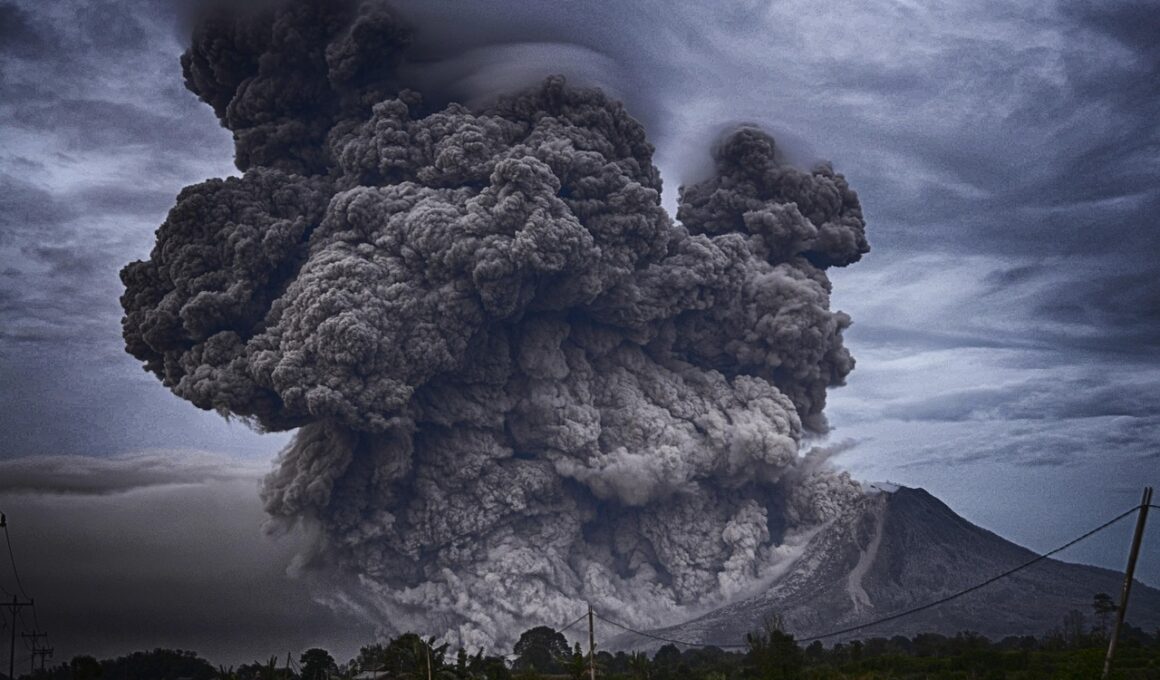Preparing for Natural Disasters: Crisis Communication Plans for Small Businesses
In the ever-changing landscape of business, small enterprises face unique challenges, particularly during natural disasters. Crafting an effective crisis communication plan is essential for small businesses to ensure safety and minimize disruption. Despite their size, small businesses must prioritize developing a comprehensive plan that respects their resources and capabilities. The first step involves identifying key stakeholders, including employees, clients, suppliers, and local authorities. By clearly defining audience groups, businesses can tailor communication strategies to ensure efficient delivery of information. Next, create a communication chain that establishes roles and responsibilities during a crisis. This ensures messages are sent without delay and that everyone knows their duties. Remote communication tools and social media platforms are vital in disseminating information quickly and effectively. Additionally, determining the preferred communication methods among stakeholders, such as email, text alerts, or social media updates, is crucial for engagement and information sharing. Lastly, regular training and drills can keep the team prepared and aware of processes, providing confidence and clarity during emergencies. A robust crisis communication plan can serve as a lifeline for small businesses in navigating the challenges that arise from natural disasters.
Understanding the types of potential natural disasters that may occur is crucial for small businesses. Each disaster presents unique challenges that require tailored responses and focused communication efforts. For instance, floods, storms, earthquakes, and wildfires vary significantly in their impact and aftermath. Businesses must assess the geographical risks associated with their locale and anticipate how different disasters could affect operations. Collaborating with local emergency services can provide valuable insights into the specific threats faced. Furthermore, establishing a reliable network with other local businesses may enhance support systems during crises. Having this knowledge allows small businesses to prepare for communication responses ahead of time. Create specific communication messaging for each type of disaster to ensure that key safety information and instructions are clearly understood. Involve your team in discussions on effective response plans while ensuring that resources are allocated appropriately. Effective communication leads to better preparation and response, which can ultimately minimize damages to both personnel and property. Make sure to regularly review the types of potential disasters relevant to your area and adapt your communication plan accordingly, thus ensuring your small business remains resilient and responding effectively when crises happen.
Crafting Your Communication Message
Crafting clear, concise communication messages is fundamental for managing crises effectively. The need for rapid dissemination of accurate information cannot be overstated during natural disasters. Begin by outlining core messages that relate to safety first, then address business operations. Informing employees about safety protocols and contingency plans must take precedence in your messaging. After establishing safety directives, communicate how business functions will be adapted during or after the crisis. For example, what procedures will be enacted regarding customer communication and service delivery? Make use of bullet points to convey vital information quickly. Here is a sample list of essential components to include in your messages:
- Clear safety guidance for employees and customers.
- Updated business operation hours.
- Contact information for key personnel.
- Preferred communication channels in place.
Each message should have a clear purpose and call to action so that recipients know what is expected of them. It’s equally important to monitor responses and feedback to make adjustments where necessary. This ensures that your communication remains effective and responsive to the needs of your audience.
Utilizing multiple channels for communication can greatly enhance the reach of your crisis messaging. In an age dominated by digital interaction, small businesses should harness the power of social media, email, and text message alerts to cover all bases. Social media platforms like Twitter, Facebook, and Instagram offer real-time updates that can swiftly inform the public about emergencies and ongoing situations. Email communication is suitable for more detailed information, which stakeholders may need before compliance with safety measures. Alongside, SMS alerts provide immediate access to crucial updates directly to stakeholders’ phones, promoting fast action when required. Consider developing a mobile app specifically for crisis communication that centralizes important information, updates, and notifications. Regularly assess the effectiveness of these channels to ensure no audience segment is overlooked. By adopting a multi-channel approach, your business demonstrates transparency and reliability during crucial moments. Remember, people’s expectations for timely information increase during crises, and fulfilling these expectations can reinforce trust and loyalty towards your business in the long run. Adapt your communication strategy as necessary to address the evolving needs and concerns of your audience throughout the duration of a crisis situation.
Training and Simulation Drills
Training employees on crisis communication protocols is essential for ensuring preparedness in the face of natural disasters. Providing insights into how the communication plan is structured fosters confidence among team members. Regular training sessions must emphasize the importance of adhering to communication timelines and methods established in the plan. Consider role-playing exercises and simulation drills that allow employees to practice their responses in real-time scenarios. These drills should familiarize everyone involved with their respective roles, ensuring they understand what to communicate and when. Through practice, paralysis by analysis may be lessened during an actual crisis as employees are equipped with firsthand experience. Feedback from these drills provides valuable opportunities to refine messaging and communication methods. Encourage team members to voice concerns or suggestions to enhance the plan, fostering a collaborative atmosphere. Training should not be a one-off event; it’s advantageous to schedule regular refresher sessions and communications about any updates made to the crisis communication plan. This ongoing dialogue and training nurture a culture of readiness, empowering employees to respond swiftly and effectively during a disaster or emergency.
Reviewing and updating the crisis communication plan regularly is critical for staying relevant and effective. Perceptions of risk and disaster scenarios evolve, and so must the strategies employed by small businesses. It’s vital to conduct an annual review of the communication plan, ensuring its content remains aligned with current best practices and reflects any changes in technology or community needs. Gather feedback from team members who participated in crisis drills or actual emergencies, using their insights to enhance the plan’s efficiency. Additionally, staying informed about potential natural disaster warnings from local government agencies can refine response strategies accordingly. This may mean refining objectives, updating contact lists, or adjusting messaging strategies. Encourage an open dialogue with stakeholders about their concerns regarding crisis preparedness, addressing any areas of uncertainty. Moreover, integrating lessons learned from previous events and experiences will strengthen the overall approach. Regular reviews emphasize the commitment of small businesses to safety and preparation, reassuring both employees and clients. Ultimately, an up-to-date crisis communication plan increases resilience and fosters a proactive culture in the face of adversity here little option but to respond decisively to upcoming challenges.
Conclusion and Forward Planning
In conclusion, preparing for natural disasters by developing a thorough crisis communication plan is non-negotiable for small businesses. This preparation ignites a sense of safety within employees while establishing a reliable network for rapid messaging in unpredictable times. From identifying key stakeholders and potential risks to crafting clear communication messages, each component is vital for effective crisis management. Utilizing a multi-channel approach creates a safety net that covers various audience preferences, ensuring that critical information reaches those who need it most. Regular training and simulation drills serve as an effective means of ensuring that employees feel ready to enact the plan swiftly when required. Additionally, the commitment to reviewing and updating the communication plan ensures ongoing efficacy, aligning with the changing landscape of risks and technology while addressing stakeholder concerns. It is crucial for small businesses to embrace adaptative approaches that maintain their operational integrity amidst natural disasters. Forward planning reflects a commitment to prioritize communication and safety, fostering a responsive culture that instills trust and confidence in all stakeholders during critical times. Following these guidelines maximizes preparedness and strengthens business resilience, no matter the nature of the crisis encountered.
Finally, engaging with the local community can enhance the effectiveness of your crisis communication plan. Small businesses serve as crucial resources within their communities, and actively participating in local preparedness initiatives can fortify public trust. Partnering with local organizations, such as emergency management agencies, can yield valuable insights into best practices for crisis communication. Furthermore, small businesses can help promote public awareness through workshops and information sessions that educate the community on disaster preparedness and resilience. This includes sharing resources and materials that help equip others with the knowledge necessary to respond effectively during crises. Taking the initiative to connect with the community signifies commitment and willingness to shoulder collective responsibility. This opens channels for cooperation during emergencies, resulting in stronger networks that foster effective communication practices. The interconnections forged by community involvement not only build relationships but also facilitate rapid information flow when a crisis arises. In times of adversity, being part of a resilient community can significantly strengthen a small business’s ability to weather the storms ahead. Ultimately, collective efforts pave the way for creating an environment of safety and preparedness for all.


